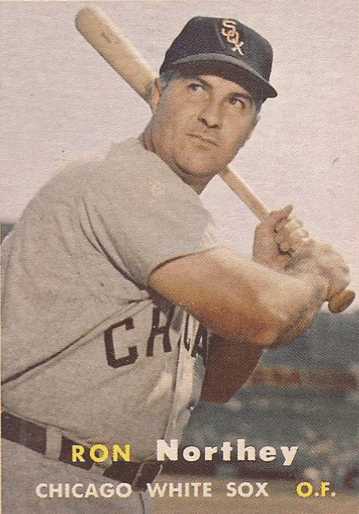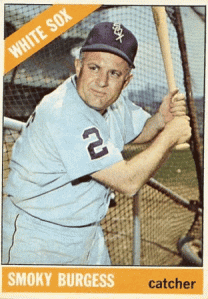By Roger Wallenstein
I’ve always had a soft spot for ballplayers who – I’d like to be kind here – appear to be far from tip-top condition. You wonder how they could possibly show up every day prepared to face the arduous 162-game grind. They’re anywhere from a touch overweight to borderline obese, like, say, Bartolo Colon.
In no other sport would these athletes be able to race up and down the court or field. How many fat hockey players do you see? Rafa Nadal must have negative body fat. Sure, there are some pot-bellied football linemen, but they also have biceps the size of redwoods, and they run 40 yards in well under five seconds.
Baseball is in a class of its own. The man who propelled the sport into the national consciousness was a gluttonous drinker whose idea of a training meal was a couple of steaks, a mountain of fries and a six-pack. Almost 100 years later, the legend of Babe Ruth arguably is even larger than the reality of his 714 home runs and .342 lifetime average, while current players work out relentlessly and eat kale.
So it is that two anti-Adonises have played important roles so far in this surprising season for the White Sox, who are 18-8 after winning five of seven in Toronto and Baltimore over the past week.
Matt Albers was potentially washed up two seasons ago. Shoulder issues limited him to 10 innings of relief for the Astros in 2014. Yet Rick Hahn inked him to a one-year $1.5 million deal prior to last season. Albers’ career again was stymied last April when he broke a finger trying to break up a melee between his teammates and the Royals. Three months of inactivity followed.
But the portly (kind enough?) right-hander came back better than ever, accounting for 20 scoreless relief appearances in August and September. He again was granted free agency in November but apparently didn’t make a strong enough impression on the rest of the league, allowing Hahn to re-sign Albers for $2 million a few weeks before the start of spring training.
Albers has picked up right where he left off with 10 more scoreless appearances to begin this season. None of these efforts came prior to the sixth inning, so he’s recording crucial outs late in games.
Sure, he was charged with two runs in Saturday night’s exciting come-from-behind 8-7 win against the Orioles, but those were unearned. Then on Sunday he retired three of the four batters he faced in the seventh and eighth innings. So make it 36 consecutive innings without yielding an earned run.
That’s even better than Jake Arrieta, a picture of chiseled conditioning, who’s been nicked for a measly four earned runs in his last 36 frames. For some misguided reason last week, Arrieta felt obligated to defend himself against rumors of PED use. Meanwhile, I’m not even sure Albers can spell PED.
Then there’s Dioner Navarro, the much-traveled switch-hitting catcher and another member of Robin Ventura’s crew who clearly hasn’t missed any meals recently. Navarro began the season in a 2-for-29 funk while sharing catching duties with Alex Avila.
But Avila went to the DL on April 23 with a strained hamstring, and since then Navarro has gone 7-for-24. His seventh-inning, two-run triple (you read that correctly) last Wednesday broke up a scoreless tie in Toronto en route to a 4-0 shutout victory for Jose Quintana and three relievers.
And Navarro’s leadoff single Sunday in the fifth inning started a five-run salvo as the White Sox conquered Baltimore 7-1 to earn a split of the four-game series.
(In addition, Chris Sale, who didn’t have his best stuff, managed to pitch into the sixth inning on a yield of five hits, although he uncharacteristically walked four. Sale now is 6-0. The pitcher with the best season start in Sox history is Orval Grove, who won his first nine decisions in 1943. Joe Horlen went 8-0 in 1967 before suffering a loss, so Sale still has some work ahead of him to make it into the history books.)
The Sox list Navarro as 5-foot-9 and 215 pounds. The first measurement seems accurate while the latter could be cause for debate. Regardless of what the scale reads, Navarro is a decent catcher who threw out nine of 23 would-be base-stealers with Toronto last year. He signed with the Sox because he wanted more playing time, and he figures to get it, which is a plus for the surging South Siders.
My affection for well-fed members of the White Sox goes back about 60 years. When starting pitchers were expected to be present in the eighth or ninth inning, most teams carried just 10 or 11 pitchers, affording them the luxury of having men who were strictly pinch hitters.
The first one I recall was aging journeyman Ron Northey, who would have been a splendid DH if he were around today. Listed as an outfielder, Northey almost never required a fielder’s glove. In 1956, he appeared in 53 games for the third-place Sox, who finished 85-69. However, in only four of those games was Northey asked to play in the field.

With a slash line of .354/.417/1.000 and a waist line of similar dimensions, I was taken with the guy. He had 48 official at-bats that year and, get this, he struck out a total of one time! He had walk-off hits in two consecutive games in September when the games counted heavily. He drove in 23 runs. Extrapolate that to 500 at-bats, and you get 230 RBI.
Aside from the three home runs that Northey slammed that season, each and every time he collected a pinch hit he was immediately lifted for a pinch runner. So Ron scored only three times the entire season. In fact, in his final 107 major league games – he last played with the Phillies in 1957 when he was 37 – Northey appeared only as a pinch hitter and was removed for a runner every time he reached base.
Being less kind and gentle, the Sporting News referred to Northey as “Round Ron” and “roly-poly.”
Northey’s success as a pinch hitter paved the way for Forrest (Smoky) Burgess, a former National League catcher who was strictly a hitter for the Sox in two of his three-plus seasons here, 1965 and 1966. A wicked left-handed slugger, Smoky stood only 5-foot-8. His figure would make Navarro look svelte.

Chicago sportswriter Edgar Munzel described Burgess as a “year-round Santa.” Writing in the Sporting News, Munzel said, “Smoky is so rotund that he looks like he ought to be wearing a bar apron and drawing foaming steins in a beer garden.”
Munzel had the correct location, but Burgess no doubt was on the receiving end – not the serving end – of those suds. But, man, could he hit. In ’65 and ’66, Burgess’s slash was .298/.392/.790. He hit a couple of homers in 1965. Those were the only times he scored because, like Northey, a pinch runner emerged from the dugout after every hit (or walk) to take Smoky’s place on the bases. Not occasionally or frequently but 100 percent of the time.
Of course, the Sox have had other men of girth over the years. Few were as interesting and colorful as knuckleballer Wilbur Wood, who was an effective reliever until manager Chuck Tanner made him a starter for the 1971 season. Tanner figured – accurately as it turned out – that anyone as good as Wood for an inning or two could stretch out a lot longer without damaging his arm. Over the next five seasons, Wood won 106 games. Being a genuine White Sox, he also lost 89. He was 24-20 in 1973, pitching 359 innings, which was 17 less than the year before.
Wood was listed at 180 pounds on his six-foot frame, but, judging from his substantial midsection, that seemed hardly possible. But it didn’t matter because the guy often pitched on two days’ rest and once even started – and lost – both ends of a doubleheader.
Those of us who would be very content with a more modest waistline while we disdain another trip to the gym need look no further than guys like Albers and Navarro for comfort. Who needs a Giancarlo Stanton when we can take pleasure in seeing Matt and Dioner contribute to the ballclub that has the best record in the American League?
They should keep consuming three squares a day. If they want seconds, go for it. Seems to be working just fine.
–
Former Bill Veeck bar buddy Roger Wallenstein is our White Sox correspondent. He welcomes your comments.
–
1. From Sam DiCola:
When I think of overweight ballplayers, I remember Pat Seerey (sometimes referred to as Fat Pat Seerey). Coming from Cleveland, he only played with the Sox for a little over a year. My best memory of him was in a game in 1949 when the Sox were probably losing 1-0 with two outs in the ninth inning; Luke Appling walked and Fat Pat came up and hit a high homer that just made it into the left field stands for a walk-off victory.
Editor’s Note: He also had a four-HR game for the Sox in 1948.
Posted on May 1, 2016


